Iran, a land steeped in history and culture, is home to some of the world’s most awe-inspiring architectural wonders and historical sites. These monuments are not just mere structures; they are the enduring legacy of the great Persian empires and a testament to Iran’s rich cultural and historical heritage.
From the grandeur of ancient ceremonial capitals to the intricate beauty of Islamic architecture, each monument in Iran tells a unique story of the past. These sites are significant not only for their architectural and artistic merit but also for their contribution to our understanding of ancient Persian civilization and Islamic culture. As we explore these famous monuments, we delve into a world where art, history, and culture intertwine, offering a window into the soul of Iran.
8 of The Most Famous Monuments in Iran
Iran, a country steeped in a rich historical legacy, is known for hosting some of the most famous monuments in Iran, each reflecting a chapter of its storied past. These include:
1. Persepolis
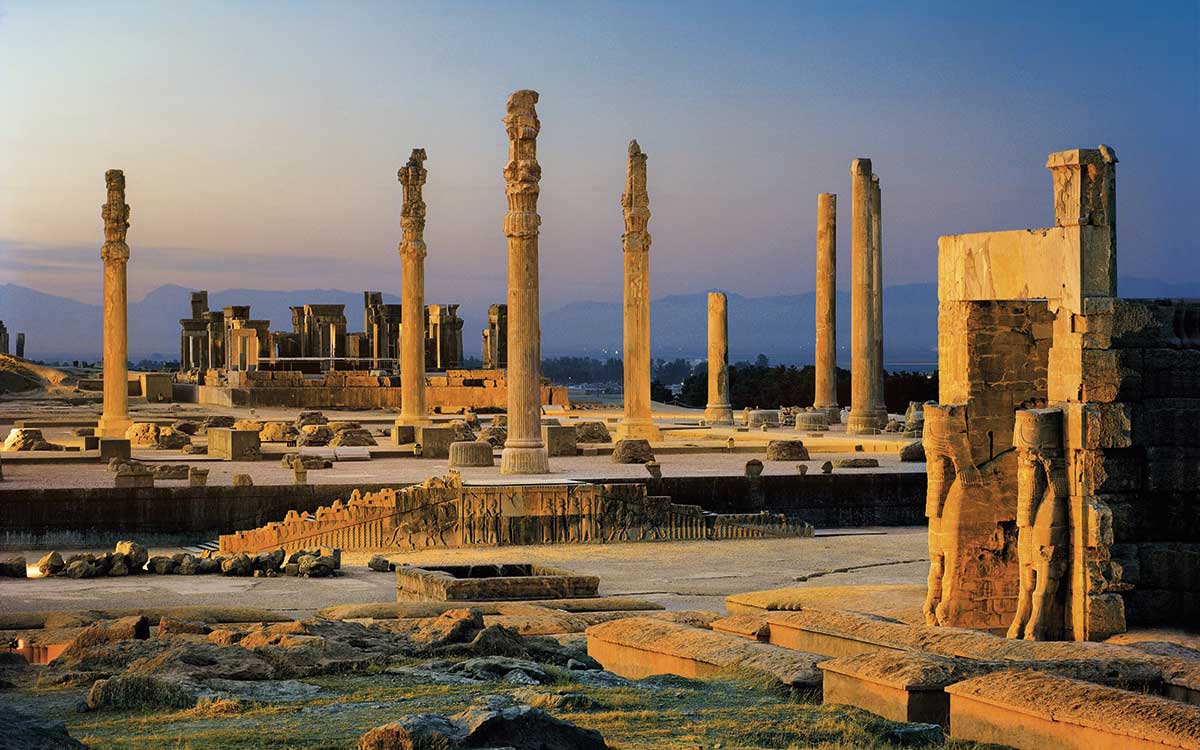
Persepolis
Persepolis, an ancient ceremonial capital of the Achaemenid Empire, is one of the most famous monuments in Iran and a significant archaeological site. Founded by Darius I in 518 B.C., Persepolis embodies the grandeur and complexity of the Persian Empire at its zenith. The site is characterized by majestic structures such as the Gate of All Nations, the Apadana Palace, and the Hall of a Hundred Columns. Intricate bas-reliefs depict scenes of ancient ceremonies, offering insights into the cultural and political significance of this once-great city.
The destruction of Persepolis by Alexander the Great in 330 B.C. marked the end of its prominence, but the ruins have remained a poignant reminder of Persian history. The site’s immense terraces, richly decorated palaces, and imposing gateways echo the power and the architectural ingenuity of ancient Persia. Today, Persepolis is recognized as a UNESCO World Heritage site, drawing scholars and tourists alike, who are captivated by its ancient splendor and historical importance.
2. Naqsh-e Jahan Square
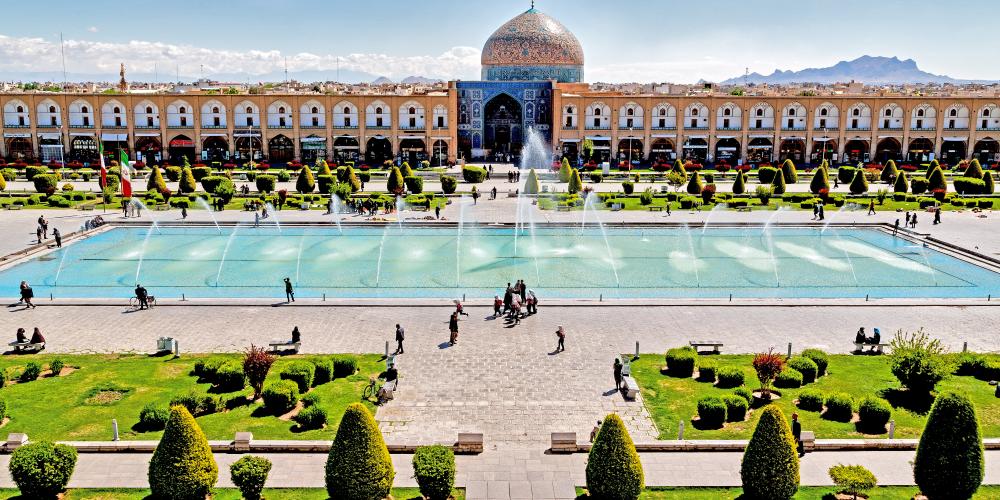
Naqsh-e Jahan Square in Esfahan
Naqsh-e Jahan Square, located in the heart of Isfahan, is a monumental testament to the Safavid dynasty’s architectural prowess and urban planning. Constructed in the early 17th century under Shah Abbas I, this square is surrounded by some of the most significant buildings of the era, including the Imam Mosque, the Sheikh Lotfollah Mosque, the Ali Qapu Palace, and the sprawling Isfahan Grand Bazaar. The square’s design integrates these architectural marvels with a large open space, reflecting the Safavid vision of an ideal city.
The square has been a vibrant hub of social and commercial life for centuries. It’s a place where citizens and travelers alike marvel at the exquisite tilework and grandeur of the surrounding structures. Naqsh-e Jahan Square is not just a historical site but a living part of the city. It is recognized by UNESCO as a World Heritage site, praised for its unique beauty and historical importance, making it a pivotal destination for anyone visiting Iran.
3. Golestan Palace
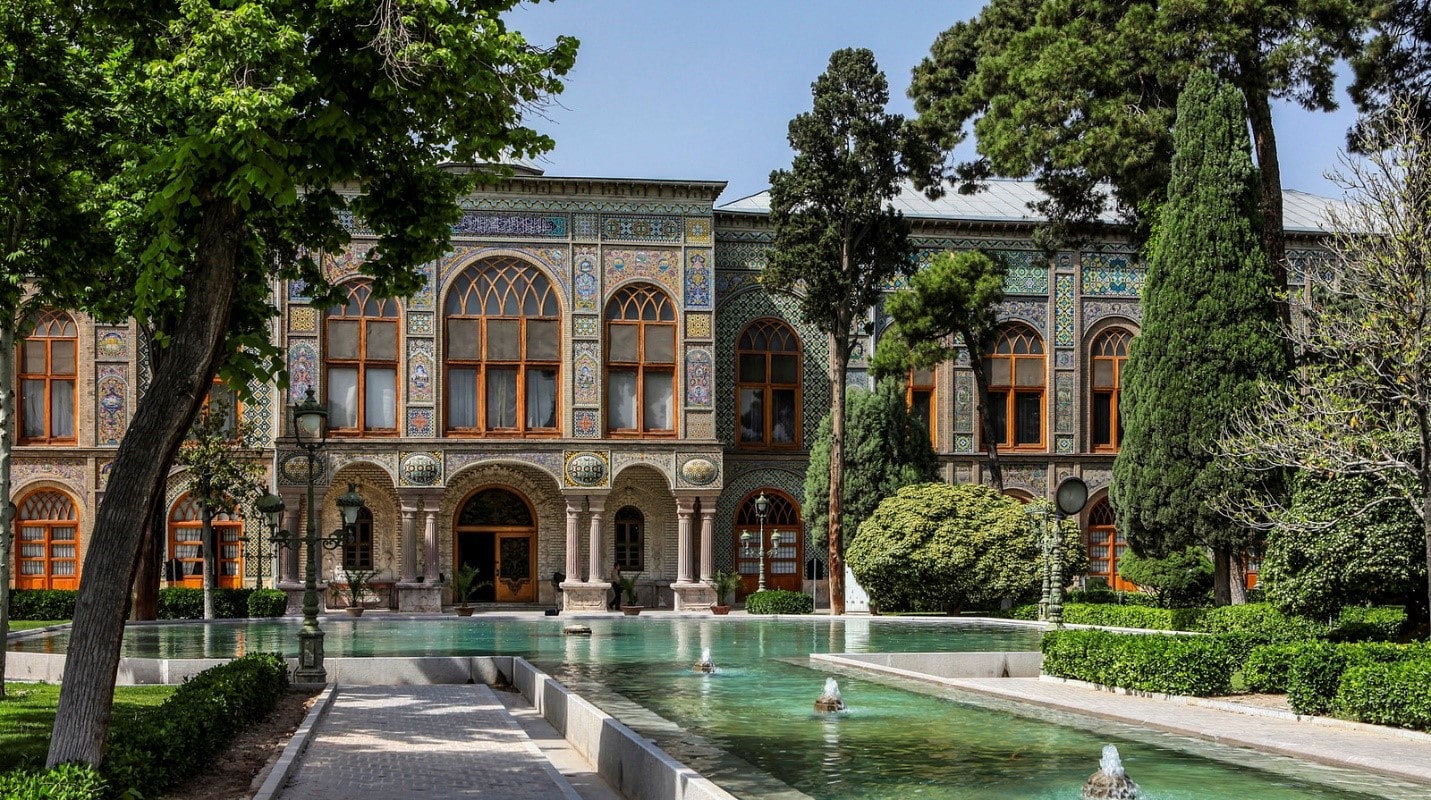
Golestan Palace
Golestan Palace, a dazzling highlight of Tehran’s architectural landscape, is an opulent complex built during the Qajar dynasty. This palace complex exemplifies the successful integration of earlier Persian crafts and architecture with Western influences. The Golestan Palace is renowned for its ornate rooms, spectacular gardens, and the use of mirrored mosaics, a characteristic feature of Qajar-era design. The complex includes several significant buildings, such as the Marble Throne and the Edifice of the Sun (Shams ol Emareh), which are a testament to the artistic and architectural advancements of the period.
As a UNESCO World Heritage site, Golestan Palace stands as a symbol of Tehran’s historical evolution. The palace has been a center of Qajar political power, hosting significant royal ceremonies. Its halls and rooms, adorned with intricate tiles, paintings, and textiles, showcase the rich cultural heritage of Iran. Golestan Palace is not just a historical monument; it’s a cultural treasure trove that offers a glimpse into the opulent lifestyle of Persian royalty.
4. Nasir ol-Molk Mosque
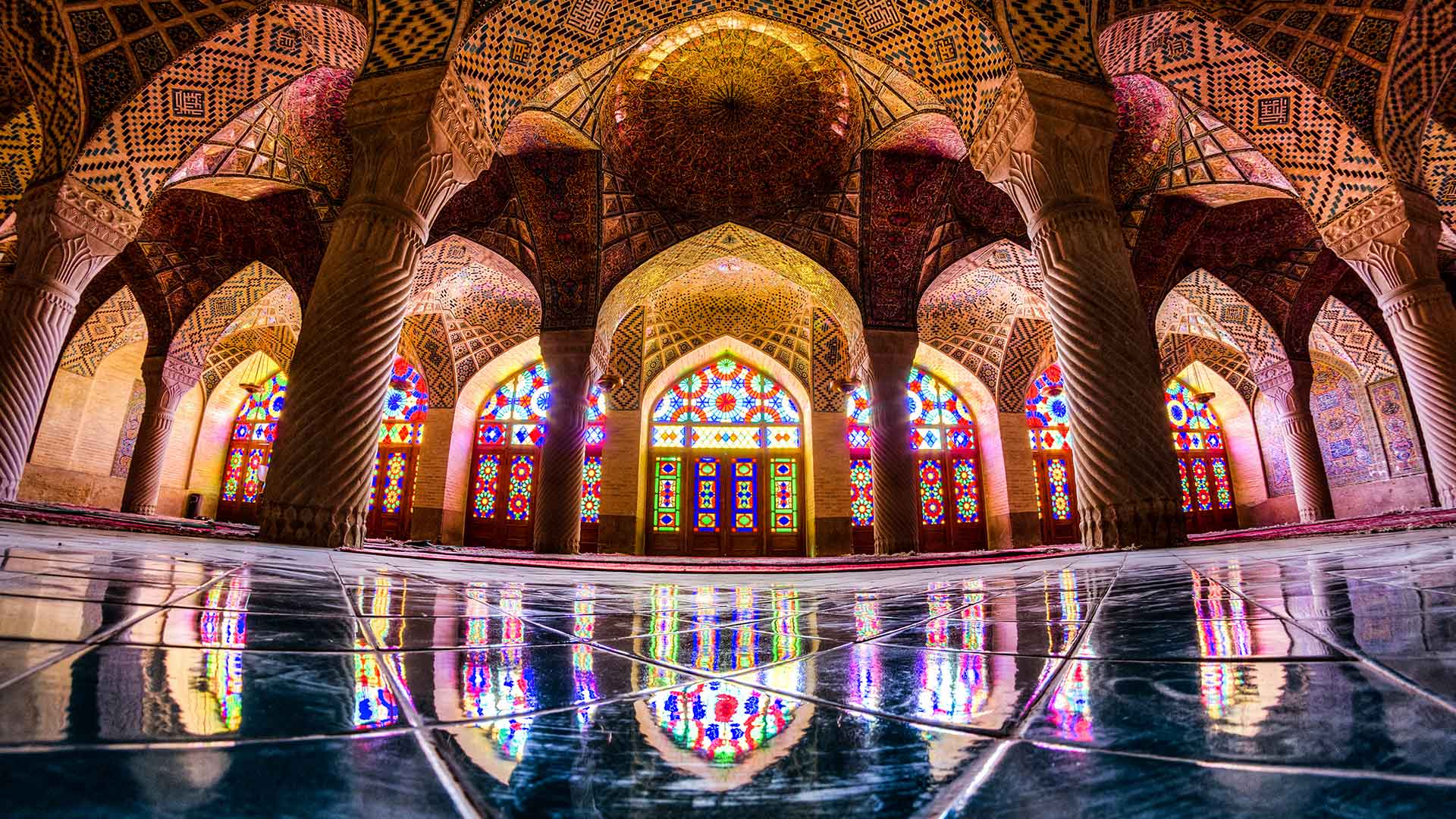
Nasir ol-Molk Mosque
Nasir ol-Molk Mosque, also known as the Pink Mosque, is located in Shiraz. This mosque is a masterpiece of Qajar-era architecture, famous for its stunning display of color and light. The most notable feature of this mosque is its stained-glass windows, which cast a kaleidoscope of colors across the intricately tiled interior in the morning light. Built from 1876 to 1888, the mosque combines traditional Islamic architecture with modern aesthetics, featuring pink-colored tiles which give it its nickname.
Apart from its colorful glasswork, the mosque is also adorned with finely crafted faience mosaics, geometric designs, and calligraphic inscriptions. The mosque’s winter prayer hall is equally noteworthy, with its remarkable muqarnas and elaborate tilework. Nasir ol-Molk Mosque is not just a place of worship but a symbol of Persian art and architecture’s evolution, attracting photographers and tourists from around the world who seek to witness its ethereal beauty.
5. Ali Qapu Palace
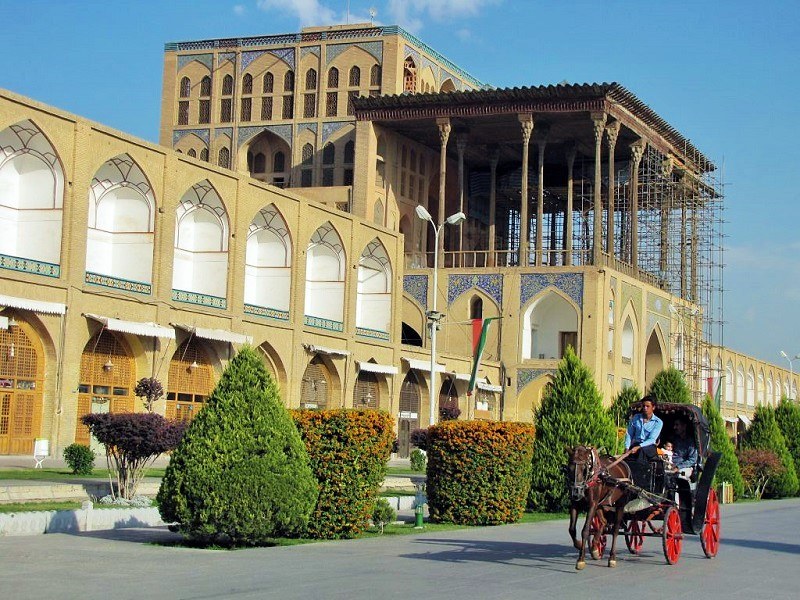
Ali Qapu Palace
Ali Qapu Palace, overlooking Naqsh-e Jahan Square in Isfahan, is a grand six-story building famous for its panoramic view of the square and its architectural significance. Built by Shah Abbas I in the early 17th century, the palace served as a monumental gateway to the royal precincts and a residence for the Safavid rulers. The name Ali Qapu, meaning “Great Gate,” reflects its role as a gateway to the royal palaces beyond it. The palace is known for its elevated terrace, a majestic view of the square, and its intricate wooden ceiling in the music room.
The interior of Ali Qapu Palace is a testament to Safavid artistic excellence, featuring elaborate frescoes and stunning murals. Each floor of the palace unveils a different aspect of royal life and artistry, with the sixth floor’s Music Room being particularly remarkable. This room is adorned with intricate stucco work shaped to resemble musical instruments, a unique architectural feature designed to enhance the acoustics for royal gatherings and concerts. The blend of architectural innovation and artistic decoration in Ali Qapu reflects the sophistication and creativity of Safavid Iran.
6. Si-o-se-pol Bridge
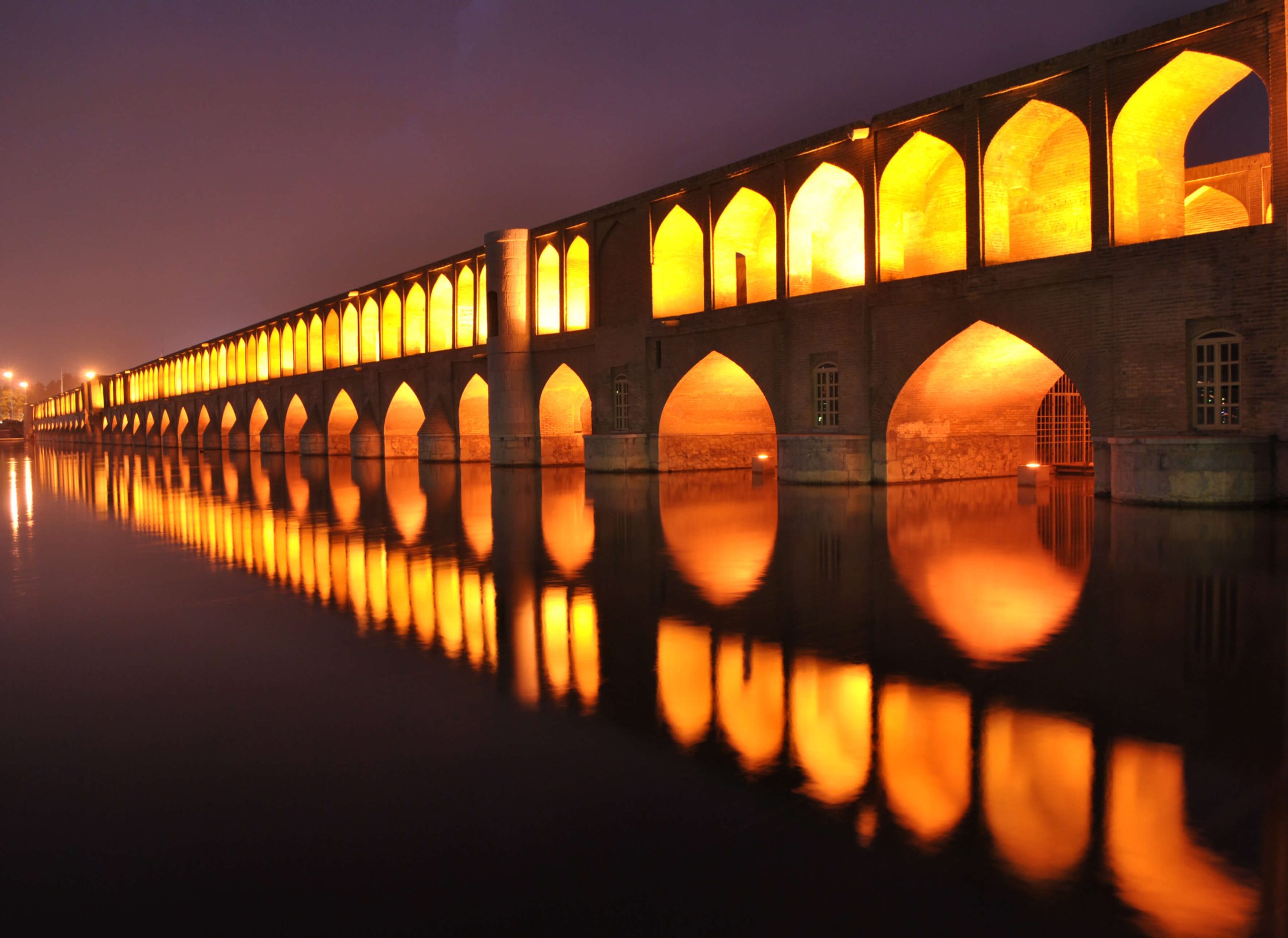
Si-o-se-pol Bridge
Si-o-se-pol Bridge, also known as the Bridge of 33 Arches, is a hallmark of Safavid-era engineering and architecture. Spanning the Zayandeh River in Isfahan, this bridge was built in the early 17th century under Shah Abbas I. It is not only a bridge but also a dam, and it serves as a social gathering place for the people of Isfahan. The bridge’s length and the design of its double row of 33 arches create a breathtaking reflection in the river waters, making it a favorite subject for artists and photographers.
At night, the illumination of Si-o-se-pol transforms it into a stunning visual spectacle. The bridge’s role has transcended mere functionality; it has been a place for promenades, tea houses, and social gatherings. The harmonious blend of its robust structural design with aesthetic elegance makes Si-o-se-pol Bridge a masterpiece of Persian architecture and an enduring symbol of Isfahan’s urban landscape.
7. Tomb of Hafez
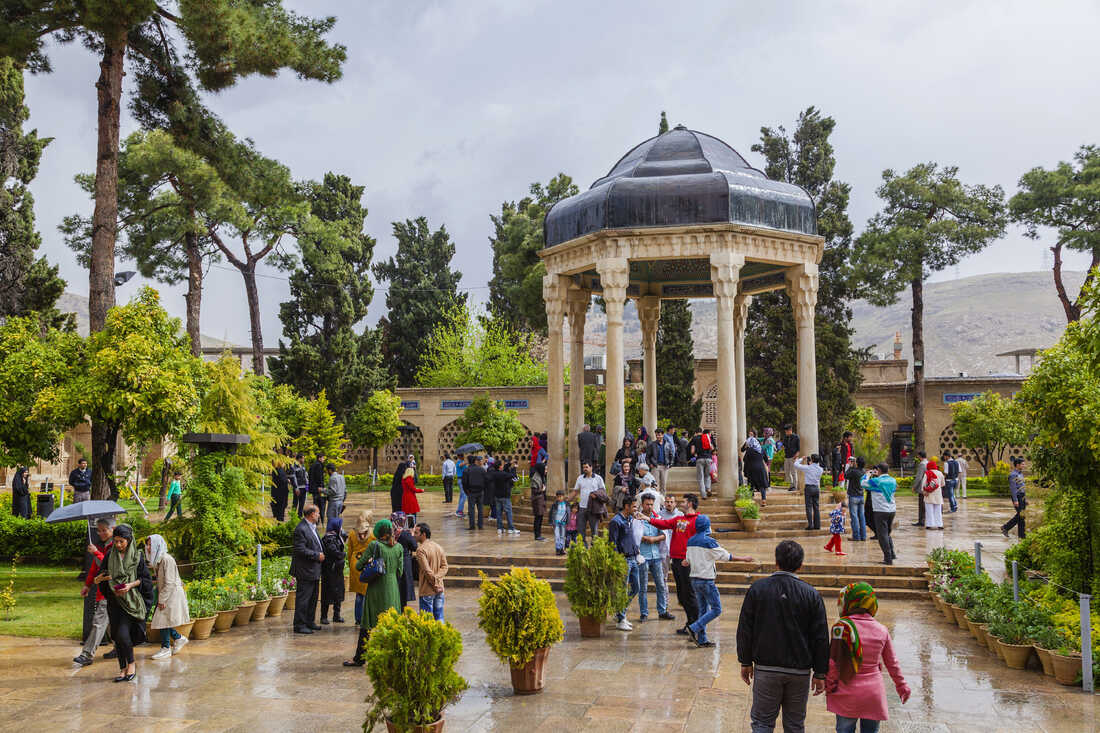
Tomb of Hafez
The Tomb of Hafez, located in a serene garden in Shiraz, is the final resting place of one of the most beloved poets in Iran, Hafez. Revered for his mystic and romantic poetry, Hafez has been an integral part of Iranian life and culture for centuries. His tomb, a place of pilgrimage for his admirers, is set in the picturesque Musalla Gardens, a site that has long inspired poets and artists. The current mausoleum, designed by French architect and archaeologist André Godard in the 1930s, features a marble tombstone engraved with Hafez’s poetry, surrounded by five intricately designed columns symbolizing the five senses.
The atmosphere of the Tomb of Hafez is one of peace and reflection, with visitors often found reciting his poetry or reflecting on his words. The site combines elements of both traditional Persian garden design and modern architectural elements, making it a place where history and contemporary culture converge. The enduring legacy of Hafez, coupled with the beauty of the garden and the artistry of the tomb, makes this site a cultural and spiritual oasis, deeply cherished in the heart of Iran.
8. Pasargadae
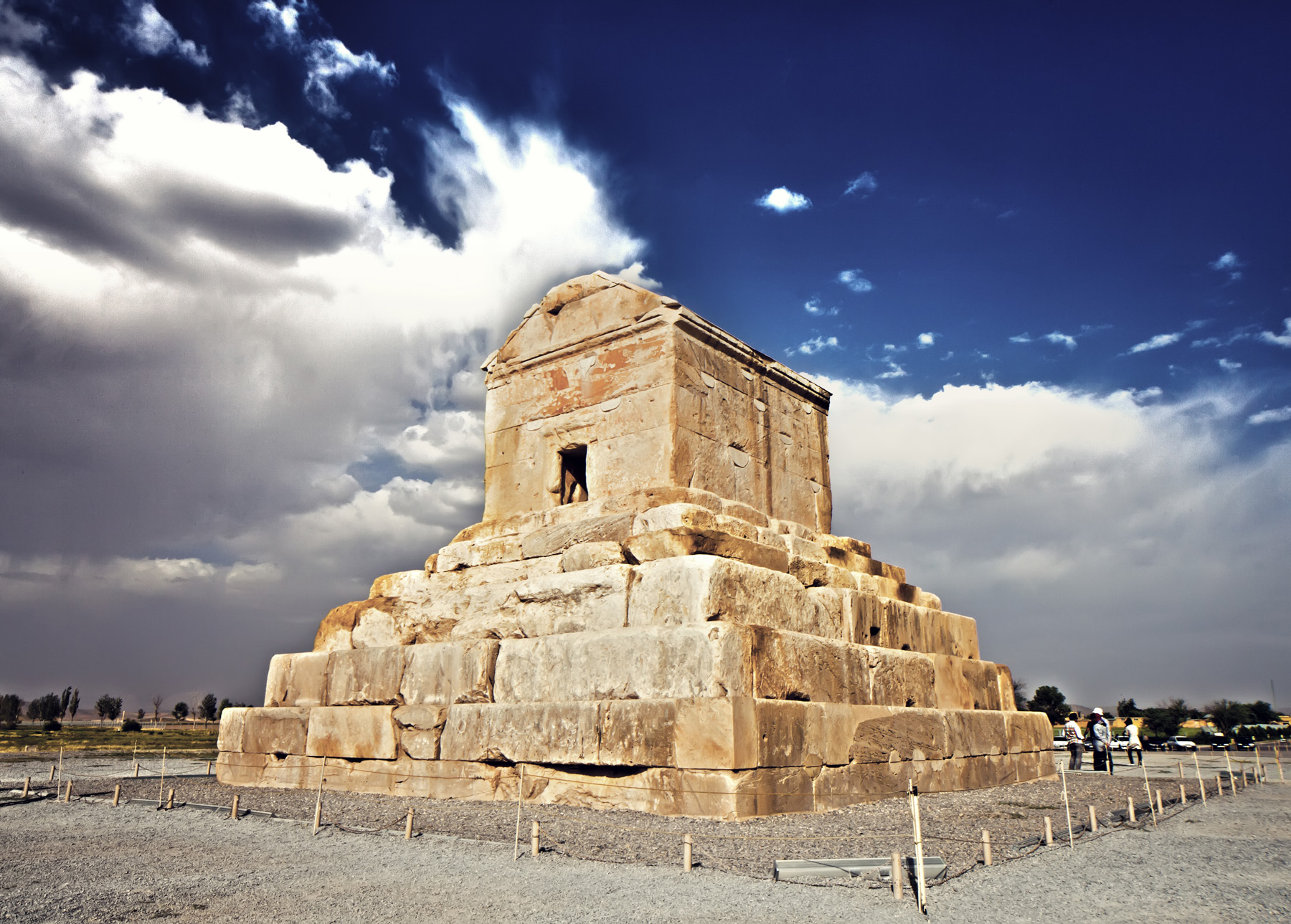
Pasargadae
Pasargadae World Heritage Site, an ancient capital of the Achaemenid Empire, is one of the earliest examples of Persian garden design and urban planning. Located in the Fars Province, it was built by Cyrus the Great in the 6th century B.C. The site is home to a collection of ancient structures, including the Tomb of Cyrus the Great, the fortified terrace of Tall-e Takht, and the remains of several palaces. Cyrus’s tomb, with its simple yet majestic design, stands as a testament to his enduring legacy and the respect he commanded across the Persian Empire.
The layout of Pasargadae represents a significant departure from previous Middle Eastern architectural traditions, emphasizing the harmonious integration of buildings within a landscaped garden setting. This early example of the Persian chahar bagh, or four-garden layout, influenced garden design throughout the region for centuries. The archaeological site of Pasargadae is important not only for its historical and architectural value but also for its role in shaping Persian cultural and aesthetic ideals. As a UNESCO World Heritage site, it continues to attract scholars and visitors eager to explore the origins of Persian empire-building and garden design.
These Most Famous Monuments in Iran reflect the country’s rich historical tapestry and are key attractions for visitors seeking to explore Iran’s cultural heritage.

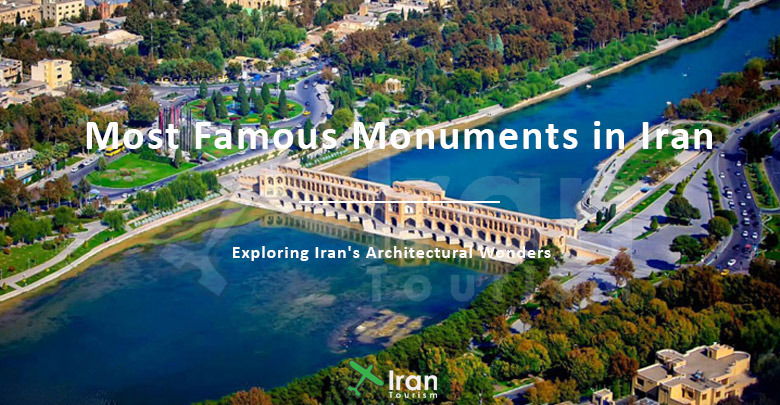

No comment